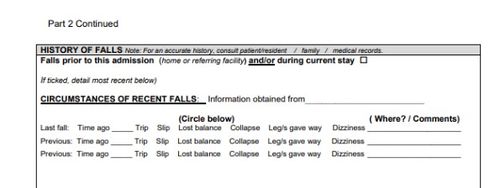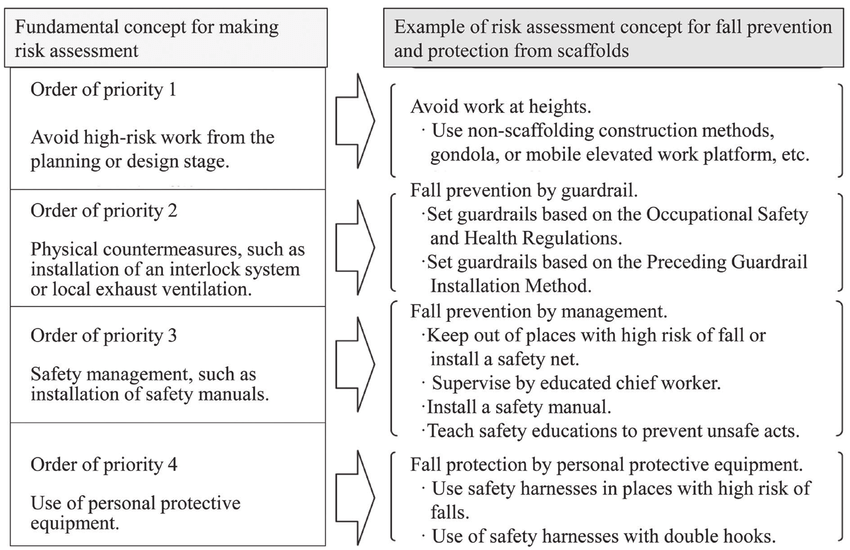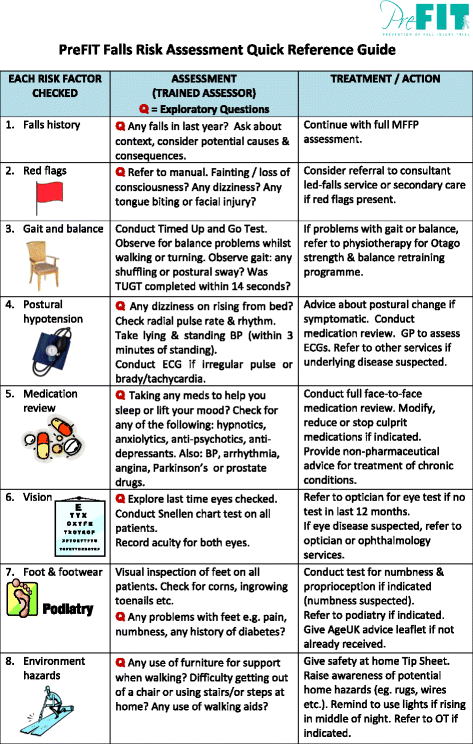The 9-Second Trick For Dementia Fall Risk
The 9-Second Trick For Dementia Fall Risk
Blog Article
The Facts About Dementia Fall Risk Revealed
Table of Contents8 Easy Facts About Dementia Fall Risk DescribedLittle Known Facts About Dementia Fall Risk.4 Simple Techniques For Dementia Fall RiskThe Ultimate Guide To Dementia Fall RiskDementia Fall Risk Fundamentals Explained
The FRAT has 3 areas: fall threat standing, threat factor checklist, and activity strategy. A Loss Risk Standing includes information regarding background of current falls, medicines, psychological and cognitive condition of the individual - Dementia Fall Risk.If the person ratings on a risk variable, the corresponding number of factors are counted to the patient's autumn threat score in the box to the far. If an individual's loss threat score amounts to 5 or greater, the individual is at high threat for falls. If the client ratings just 4 factors or reduced, they are still at some threat of dropping, and the nurse ought to utilize their best clinical analysis to handle all loss threat variables as component of an alternative care plan.
These typical approaches, in basic, assist create a secure atmosphere that lowers unexpected falls and defines core precautionary measures for all clients. Indicators are important for people at danger for falls.
About Dementia Fall Risk
Wristbands need to consist of the patient's last and very first name, day of birth, and NHS number in the UK. Just red shade ought to be utilized to signal special client status.
Products that are also far may need the individual to connect or ambulate unnecessarily and can potentially be a risk or add to falls. Helps prevent the client from heading out of bed with no aid. Registered nurses react to fallers' call lights faster than they do to lights started by non-fallers.
Visual impairment can substantially trigger falls. Hip pads, when used effectively, may decrease a hip crack when fall occurs. Maintaining the beds closer to the floor decreases the danger of falls and severe injury. Positioning the cushion on the flooring significantly minimizes loss risk in some healthcare settings. Reduced beds are made to lessen the range an individual falls after moving out of bed.
Getting The Dementia Fall Risk To Work
People who are high and with weak leg muscles who try to remain on the bed from a standing position are likely to drop onto the bed due to the fact that it's also reduced for them to reduce themselves safely. Also, if a high individual attempts to obtain up from a low bed without support, the patient is most likely to drop back down onto the bed or miss the bed and fall onto the floor.
They're developed to advertise timely rescue, not to protect against drops from bed. Aside from bed alarm systems, boosted supervision for risky clients likewise might aid protect against falls.

People with an evasion stride rise fall chances substantially. To minimize fall danger, footwear ought to be with a little to no heel, thin soles with slip-resistant walk, and support the ankle joints.
Dementia Fall Risk for Dummies
In a research study, homes with ample lights report less falls (Ramulu et al., 2021). Enhancement in lights at home might lower autumn rates in older great site grownups.

Sitters work for guaranteeing a secure, safeguarded, and safe setting. Researches demonstrated extremely low-certainty evidence that caretakers reduce loss threat in intense treatment medical facilities and just moderate-certainty that choices like video clip tracking can decrease caretaker usage without raising fall threat, recommending that sitters are not as helpful as initially thought (Greely et al., 2020).
What Does Dementia Fall Risk Do?

Enhanced physical fitness decreases the danger for drops and restricts injury that go now is endured when fall transpires. Land and water-based exercise programs might be in a similar way advantageous on balance and gait and consequently decrease the danger for drops. Water exercise may add a positive benefit on equilibrium and gait for females 65 years and older.
Chair Rise Exercise is an easy sit-to-stand exercise that assists reinforce the muscles in the thighs and buttocks and boosts wheelchair and self-reliance. The goal is to do Chair Rise exercises without making use of hands as the client becomes more powerful. See resources area for a detailed guideline on how to perform Chair Increase workout.
Report this page